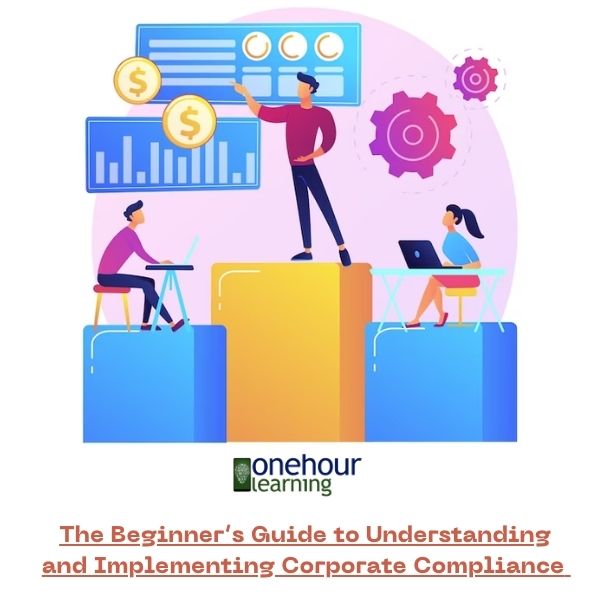How Sales and Marketing Strategies Drive Business Performance

Understanding the Interplay Between Sales and Marketing: A Starter’s Guide
August 18, 2023
The Beginner’s Guide to Building a Strong Sales and Marketing Team
August 19, 2023Introduction
In today’s highly competitive business landscape, success depends heavily on the ability to drive business performance with sales and marketing effectively. To achieve this, companies need to employ dynamic sales and marketing strategies that align seamlessly with their goals. By understanding how to harness the power of sales and marketing, businesses can significantly enhance their performance and gain a competitive edge in the market. In this blog, we will explore how sales and marketing strategies play a pivotal role in driving business performance and help companies achieve their desired outcomes.
Creating a Cohesive Sales and Marketing Ecosystem
The first step to drive business performance with sales and marketing is establishing a cohesive sales and marketing ecosystem. Both departments must work hand-in-hand towards common objectives, sharing insights and feedback regularly. By fostering open communication and collaboration, businesses can ensure that their sales and marketing strategies are aligned, resulting in a more efficient and unified approach to target customers and drive sales.
Targeted Audience Engagement
Sales and marketing strategies thrive on understanding the target audience. To drive business performance with sales and marketing, it is essential to identify the specific needs, pain points, and preferences of the target market. By leveraging data analytics and market research, businesses can create personalized and targeted marketing campaigns that resonate with potential customers. A customer-centric approach enhances the chances of lead conversion, thereby boosting business results.
Content Marketing as a Driving Force
In the digital era, content marketing has emerged as a driving force for businesses. Delivering valuable and relevant content not only attracts potential customers but also establishes the company as an industry authority.
Harnessing the Power of Social Media
Social media has become an indispensable platform for businesses to connect with their audience and drive business performance. Through various social media channels, companies can engage with potential customers, build brand awareness, and drive traffic to their websites. Integrating the focus keyword into social media posts and campaigns can amplify their reach and impact, leading to increased business success.
Data-Driven Decision Making
Data is a valuable asset that businesses can leverage to optimize their sales and marketing efforts. Analyzing key performance indicators (KPIs) allows companies to identify what strategies are working and what needs improvement. By using the LSI keyword “optimize business performance using sales and marketing tactics” and other data-driven approaches, businesses can make informed decisions, allocate resources efficiently, and refine their strategies to drive better results.
Embracing Innovation and Technology
Innovation and technology play a crucial role in transforming sales and marketing strategies. By adopting the latest tools and technologies, businesses can automate processes, enhance efficiency, and gain a competitive advantage. For instance, employing artificial intelligence-powered chatbots on websites can improve customer support and lead generation, contributing to improved business outcomes through sales and marketing strategies.
Nurturing Customer Relationships
Driving business performance goes beyond attracting new customers; it also involves retaining and nurturing existing ones. Satisfied customers become brand advocates and can significantly impact a company’s reputation and growth. Implementing the LSI keyword “enhance business performance with sales and marketing” in customer retention strategies can help businesses foster loyalty and long-term relationships, ultimately leading to sustained business success.
Continuous Performance Monitoring and Analysis
To ensure that sales and marketing strategies are truly driving business performance, continuous monitoring and analysis are imperative. Key metrics such as conversion rates, customer acquisition costs, and return on investment (ROI) should be tracked regularly. By closely monitoring the performance of various campaigns and initiatives, businesses can identify potential bottlenecks and areas for improvement. This data-driven approach enables them to make necessary adjustments promptly, optimizing their efforts and maximizing results.
A/B Testing for Optimization
A/B testing is a powerful tool that empowers businesses to fine-tune their sales and marketing strategies. By comparing different versions of ads, landing pages, and email campaigns, companies can identify which elements resonate better with their audience. The focus keyword “boost business results with effective sales and marketing approaches” can be incorporated into A/B testing scenarios, allowing businesses to refine their tactics and enhance overall performance.
Building Strategic Partnerships
Collaborating with strategic partners can significantly impact business performance. Partnerships open new avenues for reaching a wider audience and can lead to increased sales opportunities. By selecting partners that share similar values and target a complementary customer base, businesses can mutually benefit from cross-promotional activities and expand their market presence.
Adapting to Market Trends
The business landscape is continuously evolving, driven by market trends, consumer behavior, and industry innovations. Successful businesses stay ahead of the curve by adapting their sales and marketing strategies to align with these changes. Emphasizing the importance of staying agile and using the LSI keyword “increase business success with sales and marketing techniques,” companies can remain competitive and relevant in their respective industries.
Employee Training and Development
Investing in employee training and development is essential to driving business performance. Well-trained sales and marketing teams can better understand customer needs, articulate the value proposition, and handle objections with confidence. Regular workshops and skill-building sessions ensure that employees are equipped with the knowledge and tools to excel in their roles, positively impacting overall business outcomes.
Customer Feedback and Satisfaction
Listening to customer feedback is an invaluable aspect of enhancing business performance. Satisfied customers are more likely to become repeat buyers and recommend the company to others. Implementing the LSI keyword “improve business outcomes through sales and marketing strategies” by gathering and acting upon customer feedback allows businesses to address pain points, refine their offerings, and foster a customer-centric approach.
Competitive Analysis
Understanding the competition is crucial for developing effective sales and marketing strategies. By conducting comprehensive competitive analysis, businesses can identify their strengths and weaknesses relative to competitors. This knowledge helps in crafting unique selling propositions and highlighting differentiators, enabling businesses to position themselves more effectively in the market.
Conclusion
Driving business performance with sales and marketing strategies is a multifaceted process that requires careful planning, execution, and adaptability. By continuously monitoring performance, A/B testing for optimization, building strategic partnerships, and staying abreast of market trends, businesses can stay ahead of the competition. Investing in employee training, embracing customer feedback, and conducting competitive analysis further contribute to achieving success. With a holistic approach that incorporates the focus keyword and LSI keywords, businesses can unlock the true potential of their sales and marketing efforts, leading to sustained growth and prosperity.




